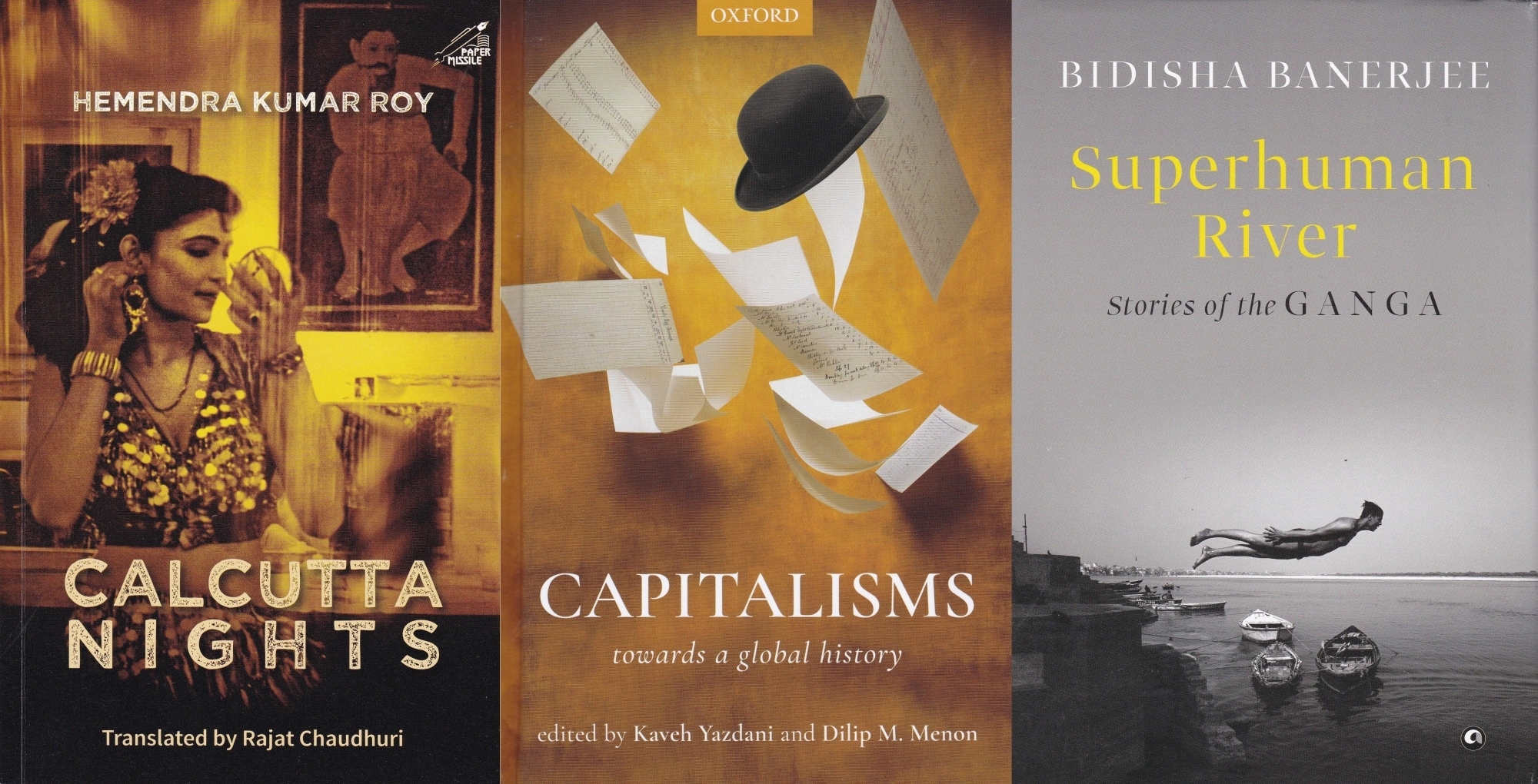By Vishnu Makhijani
New Delhi, How long can the Ganga river sustain the 500 million people along its banks; study how capitalism functioned in India before the turn of the previous century; and finally, get an insight into the turbulent times in Calcutta in the first two decades of the 1900s.
Immerse yourself in the offerings of the IANS Bookshelf This Weekend.
1. Book: Superhuman River – Stories of the Ganga; Author: Bidisha Banerjee; Publisher: Aleph; Pages: 226; Price: Rs 499.
Bidisha Banerjee confesses to have been fascinated with the Ganga ever since she pretended as a child, that the Kolkata municipal tapwater was Gangajal.
“In 2009, I heard that the Ganga was going to dry up by 2035… this claim hit me like a bucket of cold water. I was studying in the US, and was fortunate enough to be able to return to India and travel along the majestic river. I witnessed a solar eclipse from the river at Varanasi and trekked up to Gaumukh, where its waters begin. By January 2010, it turned out that – even though the effects of global warming are causing the Himalayan glaciers that feed the Ganga to melt – the 2035 figure was an overstatement and the Ganga, at least in our lifetime, will not run out of water,” Banerjee, who has been trained in environmental science and climate change policy, explains with much feeling.
The whys and wherefores are explained in three parts – Himalaya To Plains, Plains and Delta and ends on a note of caution:
“When I first started travelling along the Ganga, I thought that the challenges that the river faced were technical, for example, due to climate change caused by fossil fuels and other industrial pollutants. Over time though, I came to see that the Ganga’s demise has even more to do with greed, apathy, loss of bodily connection to the river, and ignorance about how to transform consciously long-standing mindsets and behaviours. Yet, experiencing the river and its peoples – its next of kin – showed me hope, and how a free-flowing clean Ganga might be possible,” Banerjee writes.
2. Book: Capitalisms – Towards a Global History; Edited by Kaveh Yazdani & Dilip M. Menon; Publisher: Oxford University Press; Pages: 397; Price: Rs 1,495.
Here is a scholarly works that challenges conventional wisdom that capitalism is a Western concept.
In India, writes David Wishbrook, a Fellow of Trinity College, Cambidge, “wealth has come to be accumulated and secured in the hands of a very narrow elite, entry to which is protected by various forms of social ascription – religion, caste and family. However, and reciprocally, labour has been increasingly stripped of its share in the social product and seen its skills and security ‘casuslised’ as its community institutions suffer even more intensive battering and squeezing.
“If this process is what actually produces the fastest-growing capitalist economy in the contemporary world, it leaves room for a provocative thought. Perhaps Anglo-Americana ought no longer to be regarded as providing the template for understanding the global history of capitalism, where its institutions can be seen now to represent redundant forms. Rather, the real character of ‘late’ capitalism suggests that the future could actually lie with economies like that of India, whose past, thereby, would acquire a quite different set of historical meanings,” Wishbrook concludes.
3. Book: Calcutta Nights; Author: Hemendra Kumar Roy (Translated by Rajat Chaudhuri);
Publisher: Niyogi Books; Pages: 138; Price: Rs 295.
What a punch this slim volume packs as it unveils the darkest secrets of the City of Palaces from Chitpur bordellos to Chinese opium dens!
“I have been witness to most of the things mentioned here,” says Roy in what he describes as a book written “for an adult male audience” that was published almost a century ago.
Calcutta, then the capital of British India, was teeming with people from different parts of the country besides Europeans and other foreigners. It was a city of sin, pleasure and suffering. All this created a unique cosmopolitan setting, coloured with shades of debauchery, darkness and crime.
As the author puts it, “like a detective, I have roamed the streets to gather these accounts. While gathering the accounts of the prostitutes’ quarters, I have received assistance from many first rate ‘experts’. If there is any such expert among the readers, he can verify whether the material obtained from my own ‘experts’ are dependable or not”.
In other words, like it or lump it. Brave words written a century ago which have stood the test of time.
(Vishnu Makhijani can be reached at vishnu.makhijani@ians.in)




